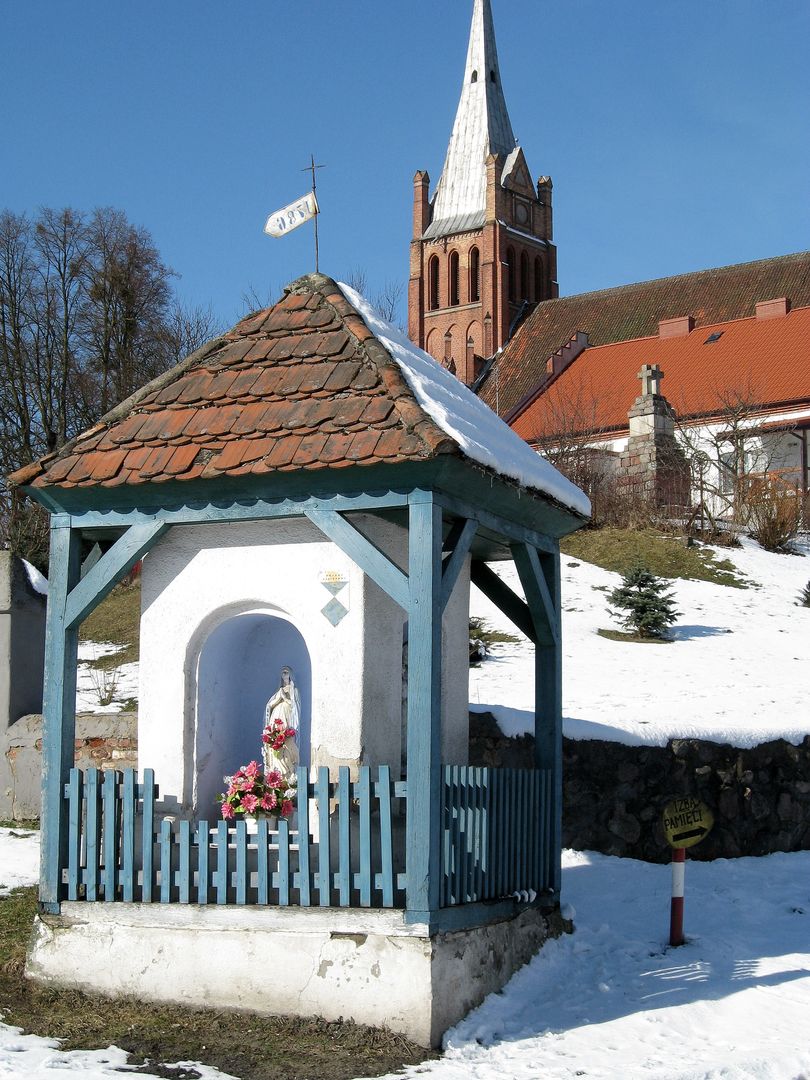Broszwald
6.02

Overview
Brąswałd, known in German as Braunswalde, is a village located in the Warmian-Masurian Voivodeship, in the municipality of Dywity, approximately 8 km north of Olsztyn. The village is surrounded by a post-glacial landscape, lakes, and the Łyna River, and its architecture consists of single-story residential buildings with gable roofs covered with ceramic tiles. Characteristic features include symmetrically placed windows and doors, as well as farm buildings made of red brick. In the center of the village stands a neo-Gothic church, built between 1894 and 1896, with polychrome paintings depicting scenes from Polish history, surrounded by greenery and ancient trees. Brąswałd has rich cultural traditions; it is home to a library, a fire station that serves as a meeting place, and a sports field. The history of the village dates back to 1337, when it was founded under Chełmno law. Its earlier history is linked to Lithuanian invasions and the Polish-Teutonic War. The village was administratively associated with a parish whose origins date back to the 14th century. In the 19th century, Brąswałd became a center of Polish activities, and during the interwar period, Polish schools and the Union of Poles in Germany operated here. The parish cemetery is the resting place of significant figures such as Father Walenty Barczewski, as well as Maria Zientara-Malewska, a Warmian poet and activist who enriched local culture with her literary contributions. The village is home to numerous monuments, including roadside shrines and a well-preserved cemetery with unique graves. Cultural events, such as readings of Maria Zientara-Malewska's poetry, are held annually, highlighting her importance to the local community and the village's history. Brąswałd is a place with rich traditions, combining historical, cultural, and architectural values.
Location
2025 Wizytor | All Rights Reserved